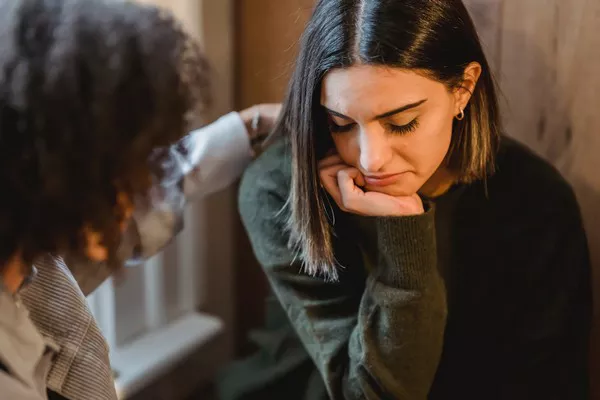Anxiety is a common emotion that everyone experiences at times, but for some, it can become overwhelming. When anxiety strikes, it’s important to have quick and effective techniques to help calm it down.
Anxiety can range from a slight sense of nervousness to a full-blown panic attack. The causes vary from person to person, but common triggers include stress from work, relationships, health concerns, or unexpected life changes. While longer-term strategies such as therapy or lifestyle changes are effective in managing anxiety, it’s essential to have immediate tools to calm yourself down in the moment.
In this article, we’ll explore various quick techniques, grounded in psychological principles, that can help alleviate anxiety quickly. Understanding the underlying mechanisms of these techniques can enhance their effectiveness and help you regain control when anxiety hits.
Understanding Anxiety and Its Effects
Anxiety is your body’s natural response to stress. When you perceive a threat, your brain triggers the release of stress hormones like cortisol and adrenaline. This “fight-or-flight” response can cause physical symptoms such as an increased heart rate, shallow breathing, sweating, and muscle tension. While this response is helpful in genuinely dangerous situations, it can be harmful when triggered by everyday stressors.
The key to calming anxiety lies in reversing this stress response by engaging your parasympathetic nervous system, which controls relaxation and recovery. Let’s dive into methods that can help achieve this quickly.
Quick Techniques to Calm Anxiety
1. Deep Breathing
Deep breathing is one of the most effective ways to instantly calm anxiety. When you’re anxious, your breathing becomes shallow and rapid. This disrupts the balance of oxygen and carbon dioxide in your body, which can exacerbate symptoms of anxiety.
To calm yourself through deep breathing, try this technique:
Box Breathing: Inhale slowly through your nose for four counts, hold your breath for four counts, exhale through your mouth for four counts, and hold for another four counts. Repeat this for several cycles.
This method engages the parasympathetic nervous system, signaling your body that it’s safe to relax. As a result, your heart rate slows, and your body shifts out of the “fight-or-flight” state.
2. Grounding Techniques
Grounding techniques involve focusing on the present moment to help pull yourself away from anxious thoughts and feelings. Anxiety often stems from worrying about future uncertainties or past mistakes, so grounding yourself in the “now” can provide quick relief.
A popular grounding technique is the 5-4-3-2-1 method, which involves using your senses to reconnect with the present:
- 5: Acknowledge five things you can see around you.
- 4: Touch four things you can feel (like the texture of your clothing, a surface, etc.).
- 3: Identify three things you can hear.
- 2: Notice two things you can smell.
- 1: Focus on one thing you can taste.
This method helps interrupt the cycle of anxious thoughts and re-focuses your attention on your surroundings.
3. Progressive Muscle Relaxation
Anxiety often causes muscle tension, which in turn can make anxiety worse. Progressive Muscle Relaxation (PMR) is a technique that involves tensing and then relaxing different muscle groups to reduce overall physical tension.
Here’s how to practice PMR:
- Start by tensing the muscles in your toes for a few seconds, then release them.
- Move up to your calves, thighs, abdomen, chest, arms, and so on, tensing and releasing each muscle group.
- Focus on the sensation of relaxation that follows each release.
PMR not only reduces physical tension but also calms your mind by directing your focus away from anxious thoughts.
4. Visualization
Visualization, or guided imagery, can quickly calm anxiety by allowing you to mentally “escape” stressful situations. This technique involves imagining yourself in a peaceful, safe place. It could be a beach, forest, or anywhere else where you feel calm.
To practice:
- Close your eyes and imagine a place where you feel safe and serene.
- Use all your senses to bring the scene to life—what can you see, hear, feel, smell, and taste?
- Focus on the details and let yourself fully immerse in the image.
Visualization helps distract your brain from anxiety and activates the body’s relaxation response.
5. Mindful Breathing and Meditation
Mindfulness involves paying attention to the present moment without judgment. Mindful breathing and meditation practices can help slow your racing thoughts and reduce anxiety.
One effective method is mindful breathing:
- Sit or lie down in a comfortable position.
- Focus on your breath as it moves in and out of your body.
- If your mind starts to wander (which it will), gently bring your attention back to your breath without frustration.
Regular practice of mindful breathing can help you become more resilient to anxiety over time.
See Also: Why Do I Struggle Going to Work Every Day?
6. Engaging in Physical Activity
Physical activity can be an immediate antidote to anxiety. Exercise, even if it’s just a short walk, helps reduce levels of cortisol (the stress hormone) and triggers the release of endorphins, which are natural mood elevators.
If you’re feeling overwhelmed, try doing a few jumping jacks, going for a brisk walk, or engaging in any physical activity you enjoy. It doesn’t have to be intense—even light movement can help shift your mental state and calm your anxiety.
7. Aromatherapy
Certain scents can have a calming effect on the mind and body. Essential oils such as lavender, chamomile, and sandalwood are known for their anxiety-reducing properties.
To use aromatherapy:
- Inhale the scent directly from a bottle of essential oil.
- Use a diffuser to spread the scent in your environment.
- Apply diluted essential oils to your pulse points (wrists, temples, and neck).
Aromatherapy can be a quick and accessible way to soothe your nervous system when anxiety arises.
8. Listening to Calming Music
Music has a powerful impact on emotions. Listening to calming music can help lower heart rate and reduce stress.
Create a playlist of music that you find soothing—this could be classical music, nature sounds, or any genre that helps you relax. When anxiety strikes, putting on your playlist can quickly shift your mood and calm your mind.
9. Limit Stimulants
Caffeine, nicotine, and other stimulants can increase anxiety symptoms by triggering the nervous system. If you’re prone to anxiety, it’s best to limit or avoid these substances, especially when you’re already feeling anxious.
If you’re feeling jittery and anxious, try drinking water or herbal tea (like chamomile or peppermint) to help calm your system down.
10. Speak to a Friend or Family Member
Sometimes, talking about your feelings with a trusted friend or family member can provide immediate relief. Sharing your thoughts out loud helps you gain perspective and can make anxiety feel less overwhelming.
If you don’t feel like discussing your worries in depth, simply having someone to listen and provide comfort can be incredibly soothing.
Long-Term Anxiety Management
While the techniques above are helpful for immediate relief, managing anxiety in the long term often requires a more comprehensive approach. Some effective strategies include:
Cognitive Behavioral Therapy (CBT): This form of therapy helps you identify and change negative thinking patterns that contribute to anxiety.
Mindfulness and Meditation: Regular practice of mindfulness can help you build resilience to anxiety over time.
Lifestyle Adjustments: Getting enough sleep, eating a balanced diet, and engaging in regular exercise can significantly reduce overall anxiety levels.
Seeking Professional Help: If anxiety is persistent and affecting your daily life, working with a mental health professional can provide you with tailored coping strategies.
FAQs
1. What is the fastest way to calm anxiety?
The fastest way to calm anxiety is by using deep breathing techniques. Box breathing or diaphragmatic breathing helps slow the heart rate and signals the body to relax.
2. How can I stop a panic attack quickly?
To stop a panic attack quickly, focus on slowing your breathing with deep breaths, use grounding techniques like the 5-4-3-2-1 method, and engage in visualization to shift your focus away from panic.
3. Can exercise help with anxiety in the moment?
Yes, even light physical activity can reduce anxiety by releasing endorphins and lowering cortisol levels. A short walk or some gentle stretching can help calm your mind.
4. How does mindfulness help with anxiety?
Mindfulness brings your attention to the present moment and helps interrupt the cycle of anxious thoughts. Regular mindfulness practice can also build long-term resilience to anxiety.
5. When should I seek professional help for anxiety?
If your anxiety is persistent, interferes with daily life, or causes frequent panic attacks, it’s a good idea to seek help from a mental health professional.
Conclusion
Anxiety can be overwhelming, but knowing how to calm it down fast can make a big difference in how you manage stressful situations. By incorporating quick, effective strategies like deep breathing, grounding techniques, and mindful practices, you can take control of your anxiety and feel more at ease. Remember that it’s okay to seek professional help if anxiety becomes a regular part of your life—it’s a sign of strength, not weakness.
Related topics:



























